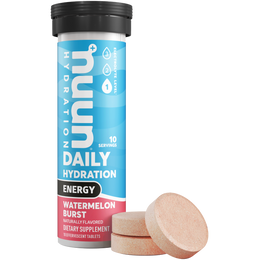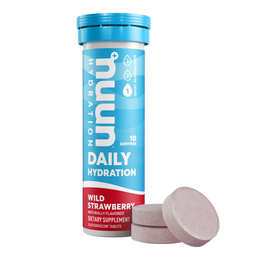The Surprising Health Risks of Standing All Day At Work

Article by Megan Howard
They say that sitting is the new smoking, but did you know that standing all day can put your health at risk too? It turns out that too much of just about anything is bad for you.
The world has a tendency to focus on the risks of spending too much time at your desk. The British government’s ‘Start Active, Stay Active’ campaign sought to raise awareness about the dangers of being sedentary. It recommended that workers break up long periods of sitting with short one-to-two-minute bouts of activity.
A 2015 report published in the British Journal of Sports Medicine also warned that long periods of sitting could be a ‘silent killer.’ As a result, they encouraged people to spend at least two hours a day on their feet if possible.
The Effects of Sitting vs Standing
These efforts did indeed raise awareness about the hazards of sitting for too long, but they barely touched on the other end of the spectrum. The reality is that as much as 75% of the global working population spends most or all of their workdays on their feet.
Staff in industries such as foodservice, construction, agriculture, and retail are on their feet for hours at a stretch—a trend which, as mentioned above, can have potentially dire health-related consequences.
Standing for too long can cause a myriad of health complications and uncomfortable effects, including issues like:
- Exhaustion and fatigue;
- Leg cramps;
- Backache;
- Bunions and corns;
- Plantar fasciitis; and
- Excess pressure on the joints.
All of these problems can not only negatively impact a worker’s job performance, but it can cause significant distress and discomfort as well. This can exacerbate the mental stresses of work and affect the immune system too. Over time, this type of sustained muscular fatigue can prompt the development of costly and debilitating long-term health consequences.
With that in mind, here are six of the most pressing health risks for employees who stand all day on the job.
- Long Term Fatigue
A recent study published in the journal Human Factors assessed the impact of extended periods of standing on 14 men and 12 women within different age groups. Some workers were 18-30, while others were over 50. They asked the participants to simulate standing for five-hour work periods, only receiving a 30-minute lunch period and brief rest breaks when they could sit down for a bit. The study may have been small, but its results suggest that standing for hours at a stretch can induce notable long-term fatigue, even with regular breaks.
The authors of the report noted that these negative impacts continued for at least 30 minutes after a period of seated recovery, suggesting that short sitting breaks were not enough to counteract the impacts of standing for hours on end.
- Chronic Lower Back Pain
Back in 2015, the University of Sydney released a report noting that performing manual jobs while in awkward positions, such as standing or being stooped over, can significantly increase your chances of developing lower back pain. Researchers suggested that you are up to eight times more likely to suffer from low back pain when working in these positions.
- Swollen Legs and Varicose Veins
The Canadian Center for Occupational Health and Safety (CCOHS) says that working frequently in a standing position can cause foot pain, leg swelling, and the development of varicose veins.
Varicose veins develop when faulty valves in your veins allow blood to flow in the wrong direction, or pool in your legs. They can cause aching, heaviness, and uncomfortable swelling. While they are treatable to an extent, there’s no way to cure them completely as of this moment.
- Joint Compression and Arthritis
Standing puts strain on the joints of your knees, hips, feet, and ankles. This strain, paired with a lack of movement, can reduce the cushioning and lubrication of your synovial joints, eventually causing them to wear down or even to tear.
The combined effects of this pressure and tearing can cause long-term pain and may even make it difficult for you to walk.
- Muscle Strain and Fatigue
Muscles that are in constant stressful positions can quickly become strained, resulting in swelling and pain in your back, neck, legs, feet, and ankles.
According to the Occupational Safety and Health Administration (OSHA), they attribute up to 33% of all worker illness and injury to muscular fatigue and musculoskeletal disorders. The administration has noted that frequent seated breaks can reduce these disorders.
- Cardiovascular Disease
Standing for long periods of time could also put a major strain on your heart. In a 2000 study, researchers assessed the relationship between standing at work and the development of carotid atherosclerosis in men. They found that standing can alter the distribution of blood in your extremities, causing blood to pool and reducing your circulating blood volume in your body.
They concluded that standing for extended periods has a direct association with ‘atherosclerotic progression,’ or the development of heart disease. They also noted that men with ischemic heart disease or carotid stenosis were at higher risk for atherosclerotic plaque formation, which can cause coronary artery disease, peripheral artery disease, carotid artery disease, and aneurysms.
How to Stay Healthy While Standing
The long-term effects of standing all day may seem dire, but there is a silver lining. There are plenty of ways to combat the risks of extended standing in order to preserve your health. They include:
- Changing work positions regularly
- Wearing comfortable footwear with adequate support and cushioning
- Staying hydrated to improve blood flow and properly cushion your joints
- Avoiding stretching, bending, and twisting around too much
- Pacing your work so that you can avoid rushing around
- Allowing staff members sufficient time for breaks and relaxation
- Providing employees with succinct guidance on proper work practices and the importance of rest periods
Adhering to these guidelines will protect your body from the negative effects of standing all day and will allow you to perform at your best. Make it your resolution to follow these guidelines and stick to them!



































